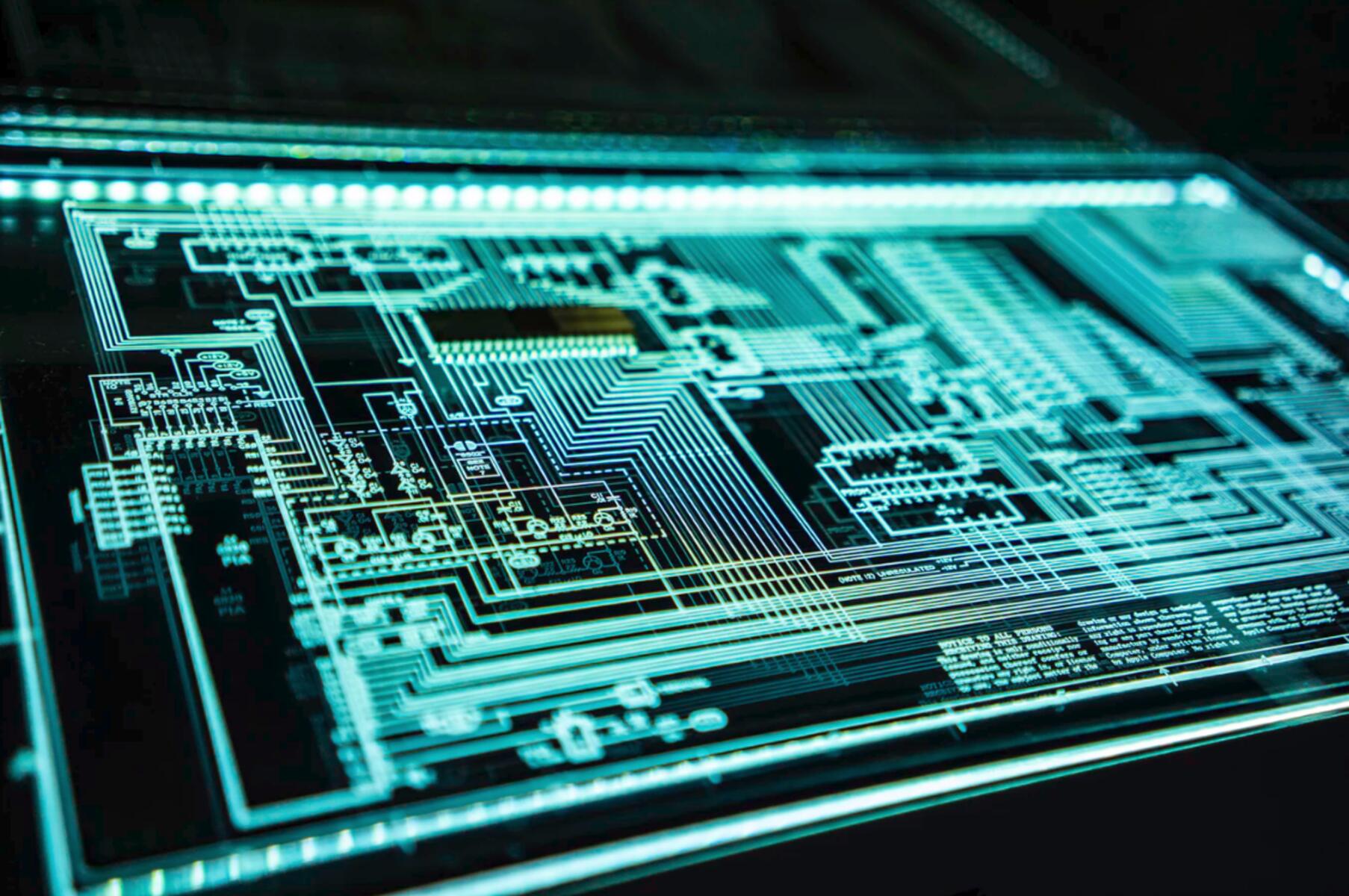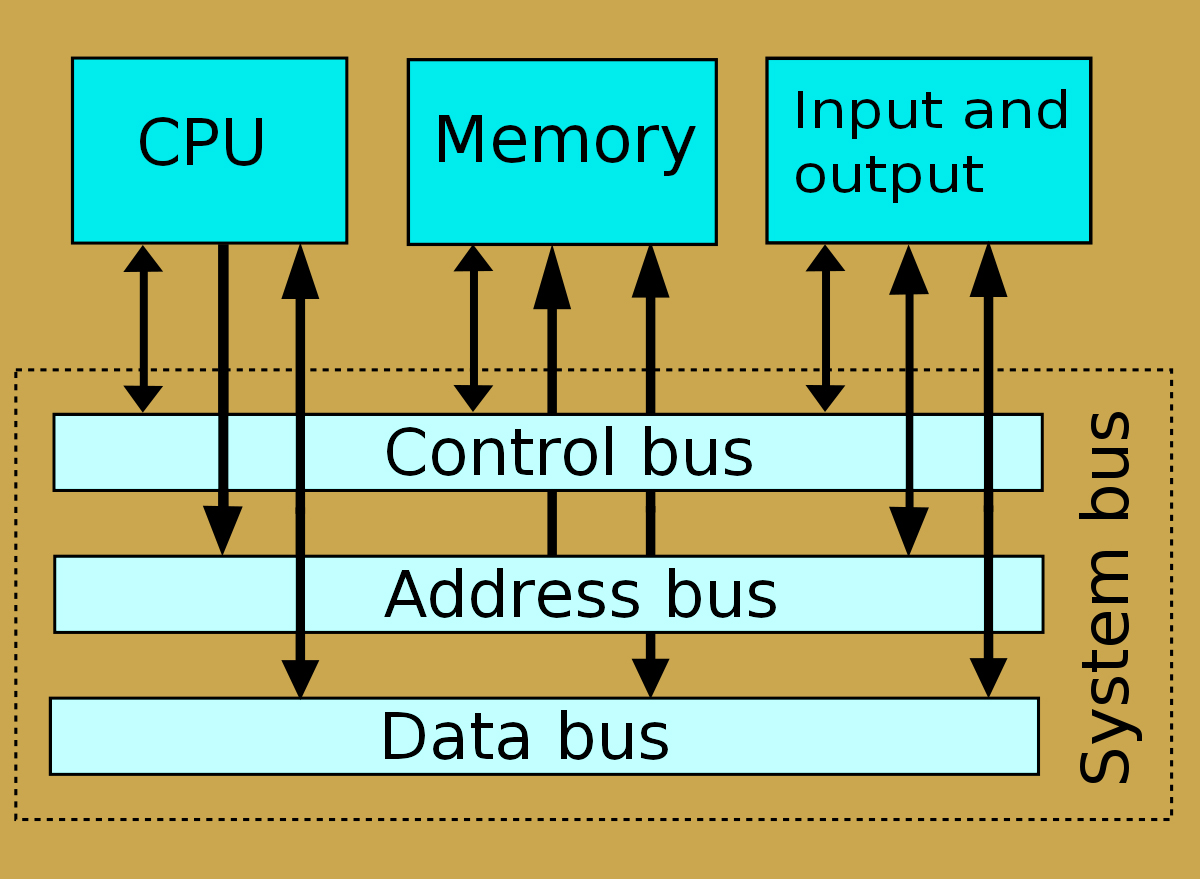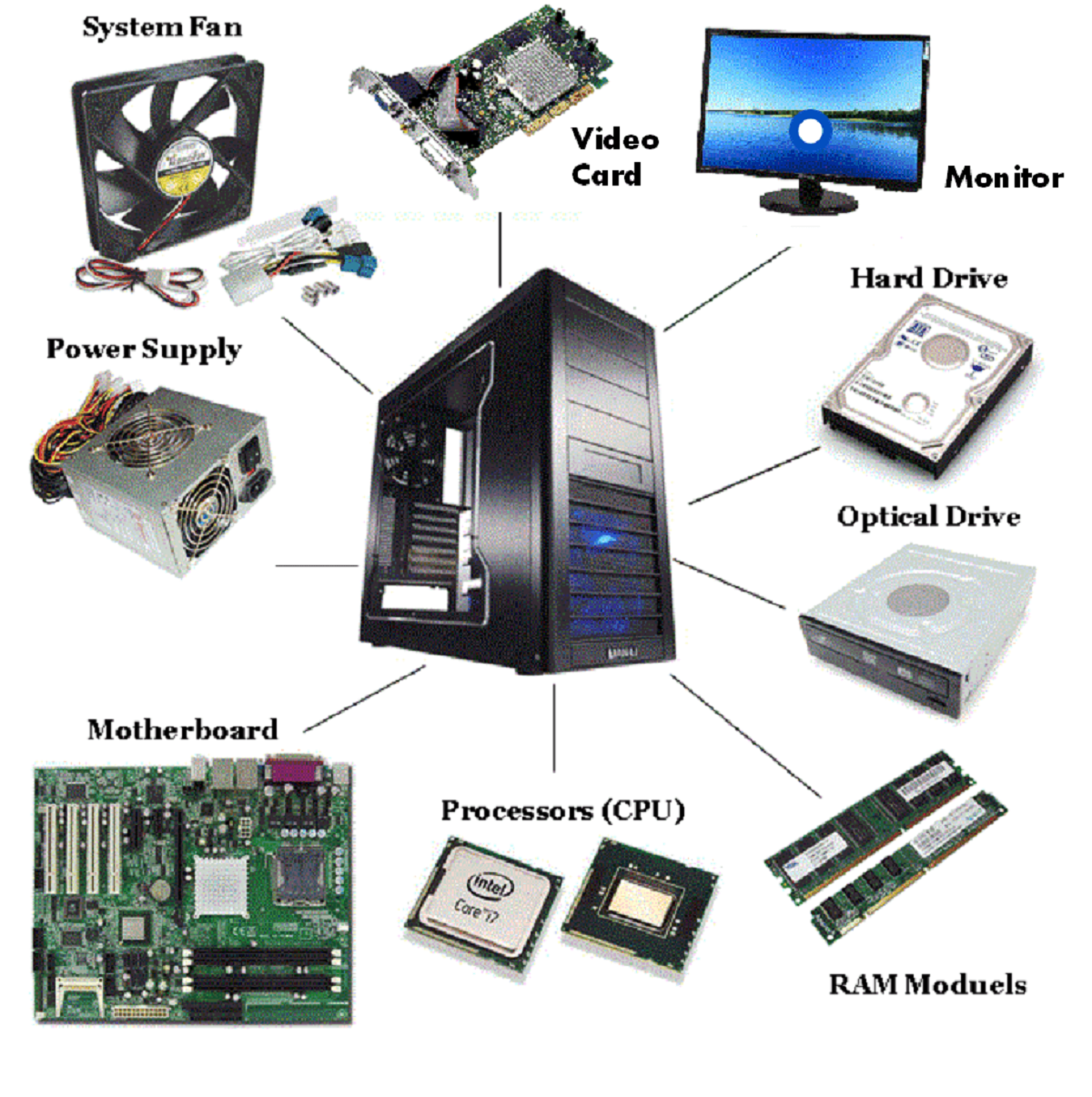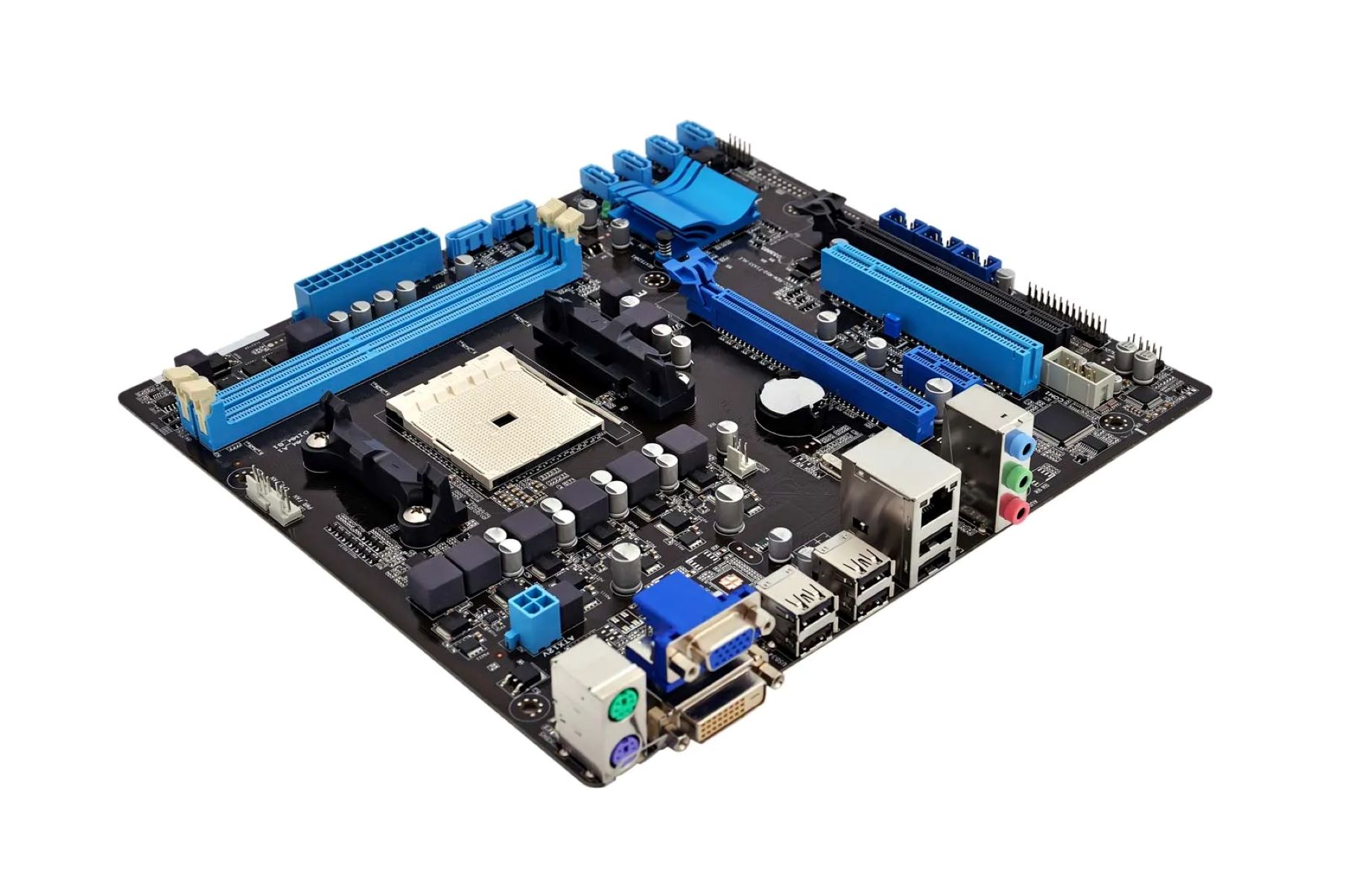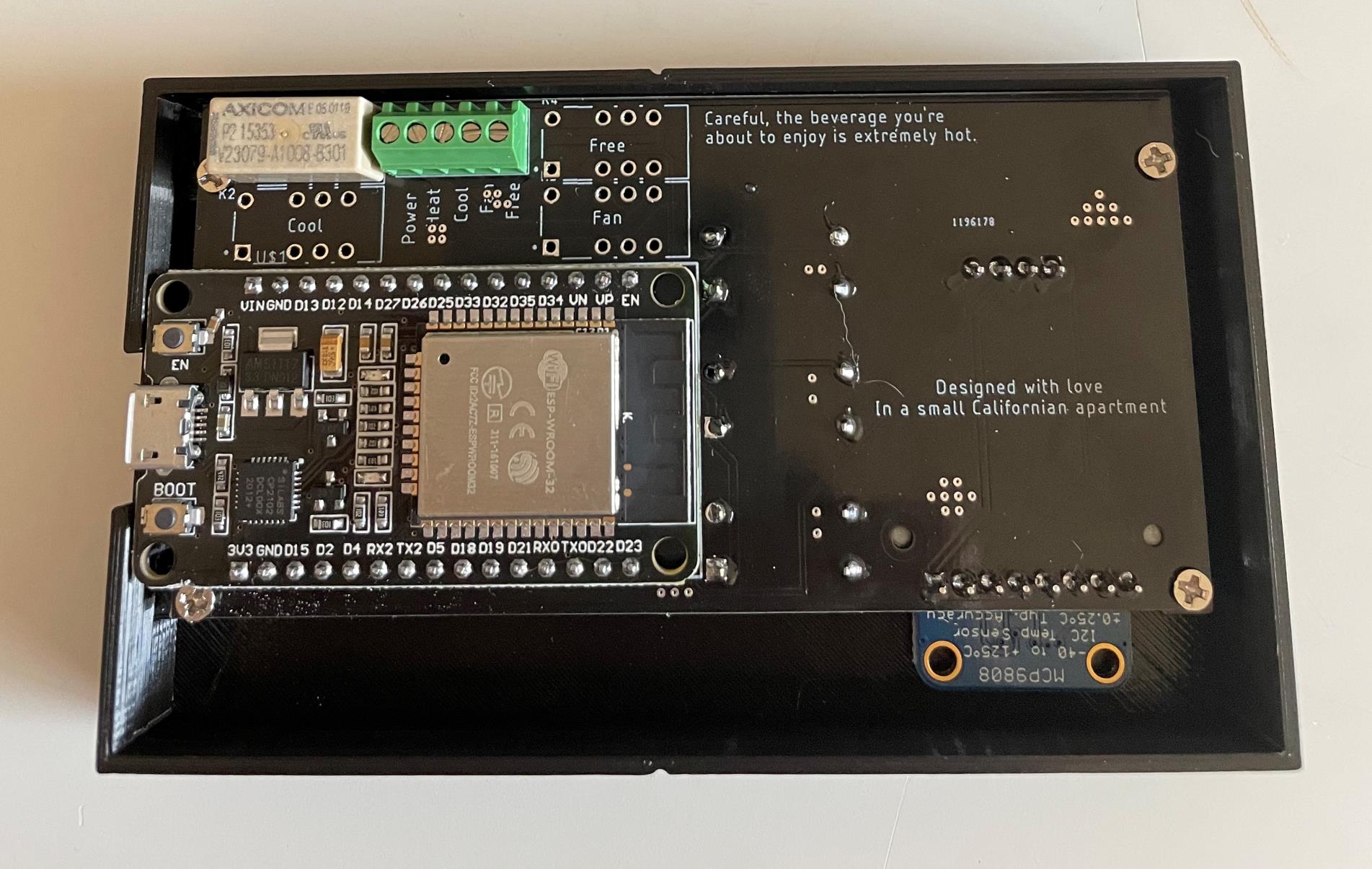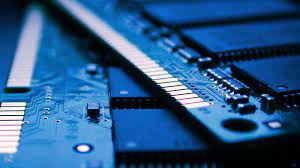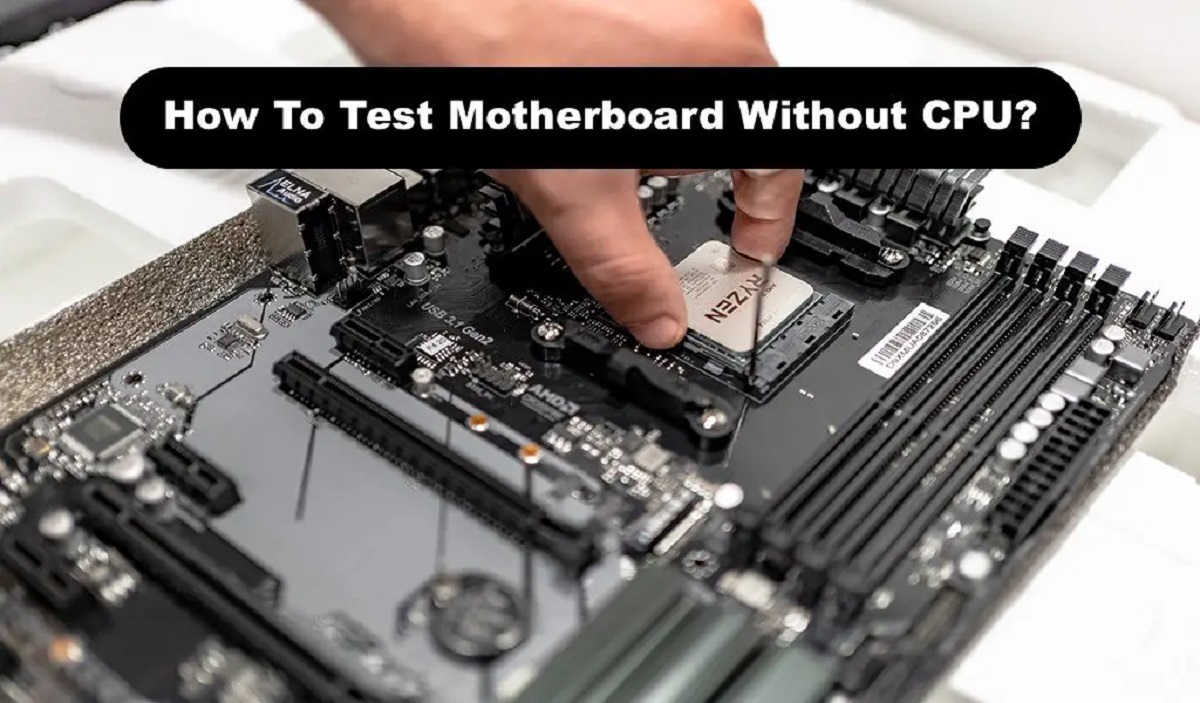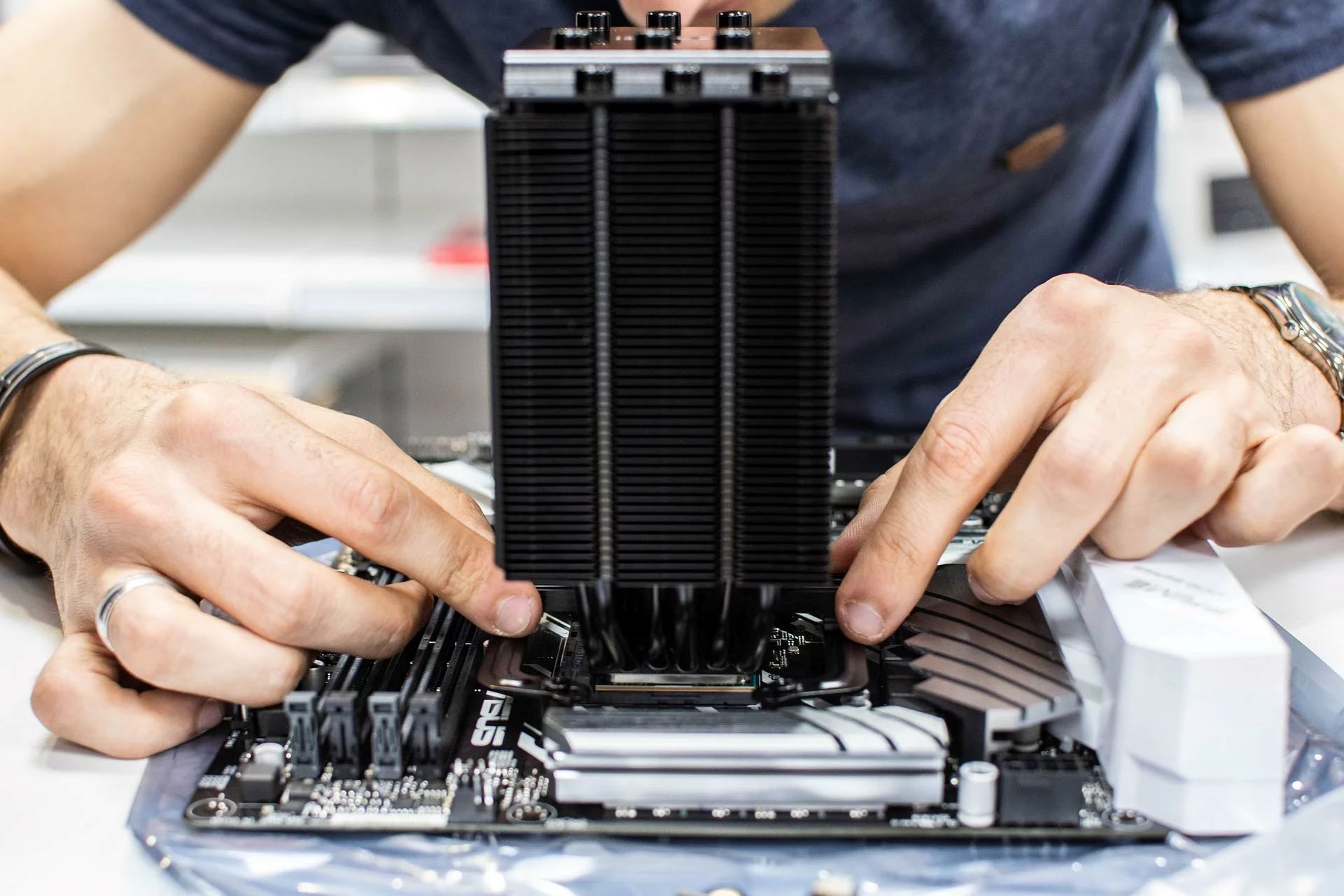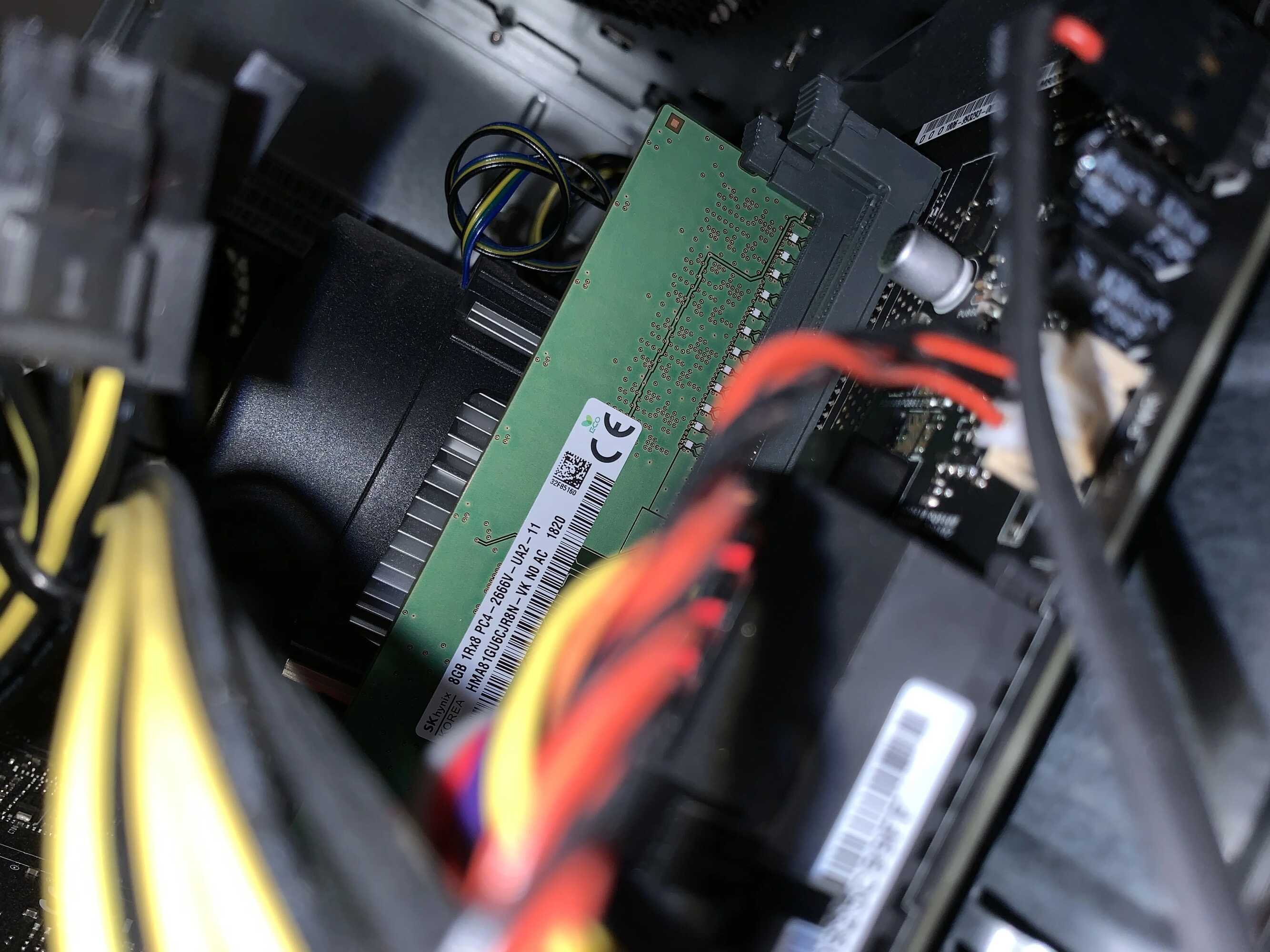Introduction
When you turn on your computer and start using various applications, have you ever wondered how the central processing unit (CPU) and random access memory (RAM) work together to handle all the tasks? Understanding the communication between the CPU and RAM is crucial in order to comprehend the inner workings of a computer system.
The CPU is often referred to as the “brain” of the computer, as it carries out all the necessary calculations and instructions to perform tasks. On the other hand, RAM serves as the temporary storage space where data and instructions are held for quick access by the CPU. In order for these two essential components to communicate effectively, they rely on several other components within the computer system.
This article will delve into the various parts of a computer that enable the CPU and RAM to communicate with each other. We will explore the motherboard, front side bus, memory controller, memory slots, data bus, and address bus, all of which play vital roles in facilitating this communication process.
By understanding how these components work together, you will have a deeper appreciation for the intricate design of a computer system, and gain insight into the technology powering the devices we rely on daily.
The CPU (Central Processing Unit)
The CPU, or Central Processing Unit, is the heart of a computer. It is responsible for executing instructions, performing calculations, and managing data flow within the system. The CPU communicates with the RAM to access the necessary data and instructions required for processing tasks.
Inside the CPU, there are various components that contribute to its functionality. One important component is the control unit, which directs and coordinates the operations of the CPU. It interprets instructions, fetches data from memory, and manages the flow of information between different parts of the CPU.
Another key component of the CPU is the arithmetic logic unit (ALU). The ALU performs mathematical operations such as addition, subtraction, multiplication, and division. It also handles logical operations like comparisons and Boolean operations.
In order for the CPU to communicate with the RAM, it relies on the memory controller. The memory controller is responsible for managing the flow of data between the CPU and RAM. It coordinates the read and write operations, ensuring that the CPU can access the required data from the RAM in a timely manner. The memory controller also handles tasks like refreshing the data stored in the RAM and maintaining data integrity.
Additionally, the CPU communicates with the RAM through the front side bus (FSB). The FSB acts as a pathway for data and instructions to travel between the CPU and RAM. It carries out high-speed transfers, allowing for efficient communication between the CPU and RAM.
Overall, the CPU plays a vital role in the communication process with the RAM. It directs and controls the flow of data, performs calculations, and executes instructions. Without the CPU, the computer would not be able to function properly, and the communication between the CPU and RAM would not be possible.
The RAM (Random Access Memory)
While the CPU is responsible for executing instructions and performing calculations, it relies on the RAM (Random Access Memory) in order to access and store data quickly. RAM is a type of volatile memory that provides temporary storage for both data and instructions that the CPU needs to carry out its tasks.
RAM operates on the principle of random access, meaning that any location in the memory can be accessed directly, regardless of its position. This allows the CPU to read and write data to any location within the memory, making it highly efficient for quick data retrieval.
One important characteristic of RAM is its speed. Unlike other storage devices such as hard drives or solid-state drives, RAM provides much faster access to data. This is crucial for the CPU, as it can retrieve information from the RAM much more quickly than from other storage mediums.
The capacity of RAM can vary depending on the computer system, ranging from a few gigabytes (GB) to several terabytes (TB). The more RAM a computer has, the more data and instructions it can store, which can lead to smoother multitasking and overall system performance.
RAM is typically installed onto the motherboard of a computer system. It is housed in small chips known as memory modules, which can be easily inserted into special slots on the motherboard. These memory modules come in different types, such as DDR3 and DDR4, each offering different speeds and levels of performance.
In terms of communication with the CPU, the RAM relies on the data bus and the address bus. The data bus carries data between the RAM and the CPU, while the address bus is responsible for specifying the location in the memory where the data is read from or written to.
Overall, the RAM is a crucial component in allowing the CPU to quickly access and store data. Its high-speed and random access capabilities make it an essential part of a computer system, ensuring smooth and efficient operation.
The Motherboard
The motherboard is the main circuit board of a computer system and serves as the hub for communication between various components, including the CPU and RAM. It provides the physical foundation for these components to connect and interact with each other.
On the motherboard, you’ll find slots or sockets for the CPU, RAM slots, as well as connectors for peripheral devices such as hard drives, graphics cards, and network adapters. These connectors allow these components to be connected to the motherboard and work in tandem with the CPU and RAM.
One essential component on the motherboard that facilitates the communication between the CPU and RAM is the chipset. The chipset acts as a bridge between the CPU and other components, including the RAM. It manages data flow and coordination between various parts of the computer system, ensuring smooth operation.
In addition to the chipset, the motherboard also contains the BIOS, or Basic Input/Output System. The BIOS is a firmware that initializes the computer system during startup and provides the necessary instructions for the CPU to communicate with other hardware components, including the RAM.
Moreover, the motherboard houses the expansion slots, which allow for the installation of additional components like graphics cards, sound cards, or network cards. These expansion slots provide the means for further customization and can enhance the capabilities of the computer system.
Furthermore, the motherboard includes power connectors to supply power to the different components. It also features various ports and connectors for peripherals, such as USB ports, audio jacks, and Ethernet ports, enabling the computer to connect to external devices and networks.
The motherboard acts as the backbone of the computer system, providing the necessary infrastructure for the CPU and RAM communication. Its design and layout determine the compatibility of different components and their ability to work together cohesively.
Overall, the motherboard is a critical component that facilitates communication between the CPU and RAM, as well as other hardware components. Its role in providing connectivity and coordination is vital to the smooth operation of the computer system.
The Front Side Bus (FSB)
The Front Side Bus (FSB) is an important component that facilitates communication between the CPU and other parts of the computer system, including the RAM. It acts as a data pathway, allowing for the transfer of information between these components.
The FSB serves as a high-speed bus that connects the CPU to the memory controller and other peripherals on the motherboard. It carries out bidirectional communication, allowing data to flow between the CPU and RAM in both directions.
The speed at which the FSB operates is measured in megahertz (MHz) or gigahertz (GHz). A higher FSB speed means that data can be transferred more quickly between the CPU and RAM, resulting in improved system performance.
In older computer systems, the FSB was responsible for coordinating communication between the CPU and other components, including the memory modules. However, with the advent of newer technologies, such as the integrated memory controller, the role of the FSB has changed.
In modern systems, the FSB has been replaced by newer technologies like the Direct Media Interface (DMI) or QuickPath Interconnect (QPI), which provide faster and more efficient communication between the CPU and RAM. These technologies offer higher transfer speeds and lower latencies, resulting in improved overall system performance.
Additionally, the FSB is closely tied to the motherboard and its compatibility with different CPU and RAM configurations. The FSB speed and architecture must be compatible with the CPU and RAM being used to ensure optimal performance and stability.
It’s important to note that the FSB is not a separate component that can be upgraded or replaced independently. It is an integral part of the motherboard’s design and is determined by the chipset and CPU architecture.
In summary, the Front Side Bus (FSB) plays a crucial role in facilitating communication between the CPU and RAM. While its importance has diminished with the advent of newer technologies, it remains an essential component in older systems and influences the overall performance and compatibility of the computer system.
The Memory Controller
The memory controller is a vital component that plays a crucial role in enabling communication between the CPU and RAM. It acts as a bridge, facilitating the flow of data between these two essential parts of the computer system.
The memory controller is responsible for managing the reading and writing of data between the CPU and RAM. It ensures that data can be accessed efficiently and accurately, minimizing latency and maximizing performance.
In older systems, the memory controller was located on the motherboard, separate from the CPU. However, in modern systems, the memory controller is integrated directly into the CPU itself. This integration allows for faster and more efficient communication, as it reduces the distance that data has to travel.
With the memory controller integrated into the CPU, the CPU has direct control over the memory operations. It can fetch data from the RAM, write data to the RAM, and coordinate memory access with other components of the system.
One significant advantage of having an integrated memory controller is the ability to support faster memory speeds. The memory controller can handle higher data transfer rates, allowing for improved system performance and responsiveness.
The memory controller also plays a crucial role in managing memory configurations and compatibility. It ensures that the RAM modules used are supported by the CPU and motherboard, preventing compatibility issues that could affect performance or stability.
Furthermore, the memory controller is responsible for controlling memory timing and voltage settings. These settings determine how data is accessed and written to the RAM, optimizing performance and stability. The memory controller adjusts these parameters based on the operating conditions and requirements of the system.
Overall, the memory controller is an essential component that enables efficient communication between the CPU and RAM. Its integration into the CPU itself allows for faster data transfer rates and improved system performance. With its role in managing memory operations and controlling memory configurations, the memory controller plays a critical part in the overall functionality and efficiency of the computer system.
The Memory Slots
The memory slots are physical slots on the motherboard where the RAM modules are installed. They provide the connection between the RAM and the rest of the system, allowing for the storage and retrieval of data by the CPU.
Typically, memory slots are designed to support a specific type of RAM, such as DDR3 or DDR4. These slots are keyed to ensure that only compatible RAM modules can be inserted, preventing compatibility issues.
The number of memory slots available on a motherboard can vary, depending on the design and form factor. Common configurations include two, four, or even eight memory slots, allowing for a range of RAM capacity options.
The memory slots are usually located near the CPU socket on the motherboard. This proximity allows for shorter electrical pathways, minimizing the distance data has to travel between the CPU and RAM modules, resulting in improved performance.
When installing RAM modules, it is important to ensure proper alignment with the memory slots. The notch on the RAM module should match the corresponding tab in the memory slot. Gently press the RAM module into place until the retention clips on the sides secure it in place.
It is worth noting that the installation of RAM modules is not limited to matching capacities. Most modern motherboards support dual-channel or quad-channel memory configurations, allowing for increased memory bandwidth and improved performance when using identical RAM modules in specific slots.
The memory slots provide the physical connection for the CPU to access and utilize the RAM’s storage capacity. They play a critical role in ensuring efficient and seamless communication between the CPU and RAM modules.
Furthermore, the configuration of RAM modules in the memory slots can affect the overall system performance. Properly arranging the RAM modules according to channel configurations and specifications can optimize memory bandwidth and improve the overall responsiveness of the computer.
In summary, the memory slots on the motherboard are the physical connectors that allow for the installation and communication of RAM modules with the CPU. Understanding their design, compatibility, and configuration can ensure optimal utilization of memory resources and enhance the overall performance of the computer system.
The Data Bus
The data bus is a critical component of a computer system that facilitates the transmission of data between the CPU and RAM. It serves as a pathway or highway through which the data travels, ensuring seamless and efficient communication between these two essential parts of the system.
The data bus consists of a series of wires or pathways on the motherboard that carry data signals between the CPU and RAM. These wires transmit binary information in the form of electrical pulses, allowing for the transfer of data in digital format.
The width of the data bus determines the amount of data that can be transferred in a single clock cycle. For instance, a 64-bit data bus can transmit 64 bits or 8 bytes of data at a time. A wider data bus can handle larger volumes of data, resulting in improved data transfer rates and system performance.
The speed at which data can be transferred on the data bus is measured in terms of frequency, typically in megahertz (MHz) or gigahertz (GHz). A higher bus speed allows for faster data transmission between the CPU and RAM, reducing latency and improving overall system responsiveness.
In addition to its role in facilitating communication between the CPU and RAM, the data bus is also responsible for carrying data between the CPU and other parts of the computer system, such as storage devices and peripheral components.
Modern computer systems often employ a concept known as bus mastering, where the CPU can directly access and control devices on the data bus, eliminating the need for intermediate data transfers. This enables more efficient data communication and improves system performance.
Furthermore, the data bus operates in synchronization with the system clock, which determines the timing and coordination of data transfer. The CPU, RAM, and other components must be synchronized to ensure proper data transmission and prevent data loss or corruption.
In summary, the data bus is a vital component of a computer system that enables data communication between the CPU and RAM. Its width and speed determine the amount and speed of data that can be transferred, directly impacting system performance. Understanding the role and characteristics of the data bus helps us appreciate the intricacies of data transmission within a computer system.
The Address Bus
The address bus is a crucial component of a computer system that plays a fundamental role in facilitating memory addressing and communication between the CPU and RAM. It is responsible for specifying the location or address in the memory where data is read from or written to.
Unlike the data bus, which carries the actual data, the address bus carries the memory addresses, which are used to identify the specific location in the RAM where the data resides. The width of the address bus determines the maximum number of memory locations that can be accessed.
For example, a 32-bit address bus can address up to 4 gigabytes (4 billion bytes) of memory, while a 64-bit address bus can address a significantly larger amount. The number of bits in the address bus determines the addressable memory range and the capacity of the system.
The CPU uses the address bus to communicate with the memory controller, specifying the memory location it wishes to read from or write to. The memory controller decodes the address sent by the CPU and ensures that the requested data is retrieved from or stored in the correct memory location.
The address bus operates in conjunction with the data bus, as the CPU needs to know both the address and data to successfully read from or write to memory. The width of the data bus is closely linked with the width of the address bus, determining the amount of data that can be transferred at a time.
It’s important to note that the width of the address bus is not always directly related to the amount of physical RAM installed in a computer system. The maximum addressable memory is determined by the width of the address bus itself, regardless of the actual amount of memory installed.
As computer systems have evolved, the width of the address bus has increased to accommodate larger memory capacities. This has allowed for improved performance and the ability to handle more demanding tasks and applications.
In summary, the address bus is an essential component of a computer system that enables communication between the CPU and RAM by specifying the memory addresses. Its width determines the range of memory that can be accessed, playing a critical role in system capacity and performance.
Conclusion
Understanding the communication between the CPU and RAM is crucial in comprehending the inner workings of a computer system. The CPU acts as the “brain” of the computer, executing instructions and performing calculations, while the RAM serves as the temporary storage space for data and instructions.
Throughout this article, we have explored the components that allow for effective communication between the CPU and RAM. The motherboard acts as the main circuit board, providing connectivity for all the components. The front side bus (FSB) acts as a high-speed pathway for data to travel between the CPU and RAM. The memory controller manages the flow of data between the CPU and RAM, ensuring efficient access and storage. The memory slots on the motherboard provide the physical connection points for the RAM modules, allowing for seamless communication. The data bus carries data between the CPU and RAM, while the address bus specifies the memory locations for data retrieval or storage.
Together, these components work in harmony to facilitate the seamless exchange of data and instructions, enabling the CPU and RAM to collaborate effectively. Each component plays a vital role in ensuring smooth system performance and efficient utilization of system resources.
By gaining a deeper understanding of these components, we can appreciate the intricate design and functionality of a computer system. With this knowledge, you can make more informed decisions when upgrading or customizing your computer, optimizing performance and ensuring compatibility between the CPU and RAM.
It is through the synergy of these components that our computers are able to perform the tasks and functions that we rely on in our daily lives. Whether it’s running applications, browsing the web, or gaming, the communication between the CPU and RAM is at the core of these operations.
So, the next time you power on your computer and marvel at its capabilities, take a moment to appreciate the intricate dance between the CPU and RAM, working in unison to bring your digital world to life.







